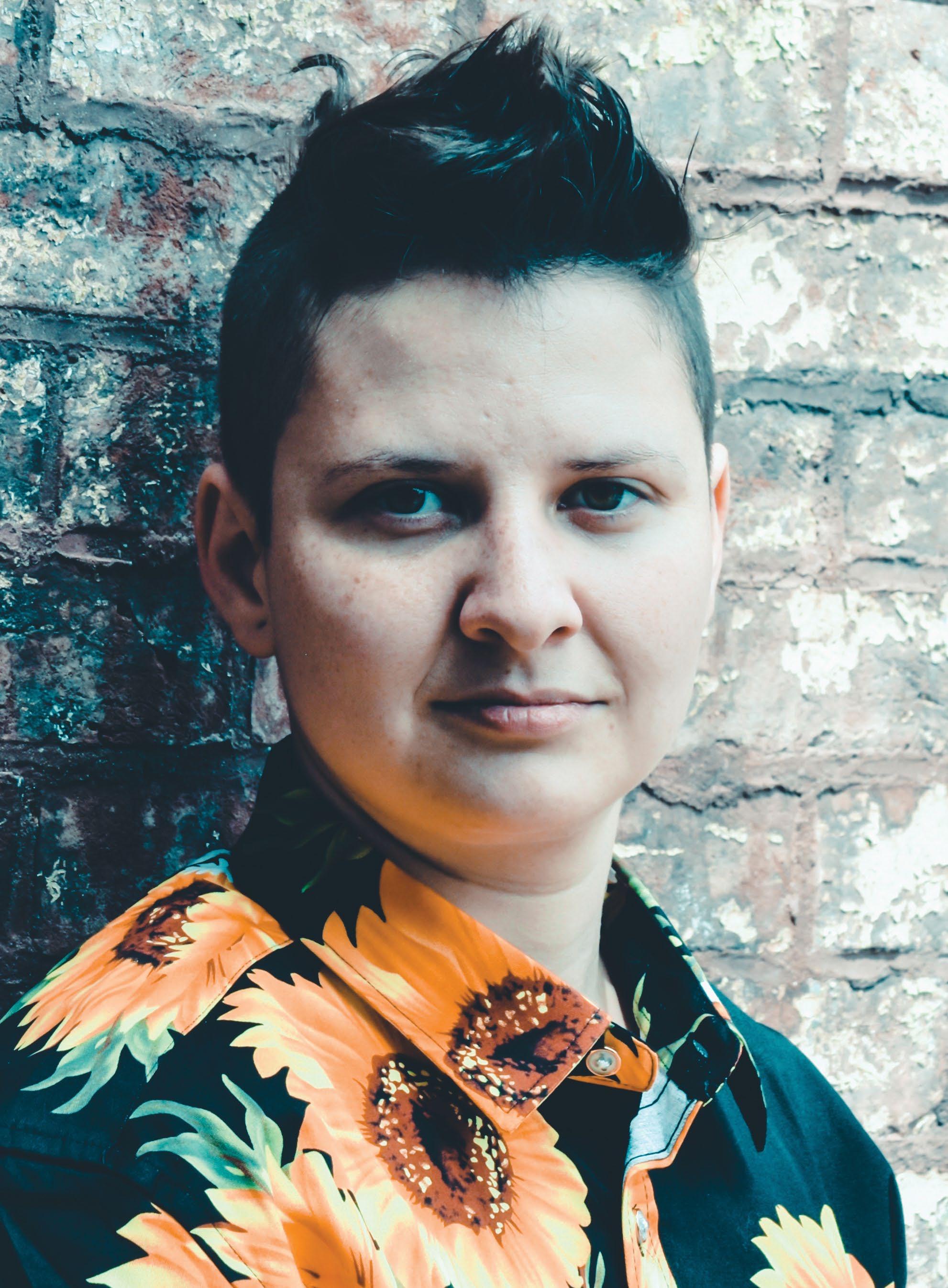
5 minute read
Survivor Series: K.D. Roche
K.D. Roche Interview by Aubrey McMahan
Just Ask Prevention’s Survivor Series spotlights individuals who were victims of human trafficking and the invaluable work they’re doing in their community to combat this atrocity. We recognize that to be successful as an organization dedicated to ending human trafficking, listening to survivors at every step of our work is critical. The incredible survivors showcased here are those with the real experience and insight in how Just Ask can best further its mission to eradicate trafficking through education, prevention, and intervention.
Advertisement
K.D. Roche is a keynote speaker, author, and comedian who likes to inspire, motivate, and educate their audience while providing valuable content. As a human trafficking field expert and survivor of childhood trafficking, they are a regular consultant for law enforcement, health care professionals, government organizations, and other service providers.
Just Ask Prevention:
Could you start by telling us a little bit about you personally, outside of the work that you do?
K.D. Roche:
family, our three dogs, and cat. When I am not working, I like to spend time outdoors gardening or working on my house. If I’m not doing that, I’m most likely doing something to engage with my creative side: sketching, writing, or performing spoken word or comedy at a coffeehouse or cabaret.
Just Ask:
That sounds like fun! I’ve heard that you sometimes perform spoken word or use comedy as well in the anti-trafficking work that you do. That’s unique. Could you tell Sure! I live in the Indianapolis area with my
us more about that?

K.D.:
Yeah. I have been doing training on human trafficking for about five years now, but I started training and consulting full time about a year and a half ago. I love speaking, but I realized how draining it was to talk so much about trauma and trafficking. There is a lot of hard work to do in this field, and
sometimes it gets overwhelming. I think we forget to take time to breathe and laugh.
Art and laughter have a way of creating connection and solidarity while giving us a break from all of the heavy talk, so I started using my love for poetry and comedy to engage in a different way
with my audience. Whatever I perform is connected in some way to the conference theme or topic of my training. Sometimes I even do comedy relief as a performance during conference lunches. It gives people a break from information overload.
Just Ask:
That’s great! I know you train on human trafficking, but are there any specific topics that you like to teach the most?
K.D.:
Yeah. I have trained a lot on working with the LGBTQ+ (Lesbian, Gay, Bisexual, Transsexual, Queer +) community and on family-involved trafficking. Those have probably been my most requested pieces of training, but I have created a few new presentations and received a lot of excellent feedback. One of them is Strategies for Organizational Capacity Building, and the other one is Stop Selling Shock and Empower Survivors: Effective Marketing Strategies that Don’t Rely on Sensationalism.
Just Ask:
Those are important topics. Just Ask does prevention work and education for the community; how would you say sensationalism impacts human trafficking prevention efforts?
K.D.:
Sensationalism in the media and even by direct service providers increases misconceptions about what human trafficking looks like and contributes to the stigma that survivors face. So much of the imagery and sensationalism of survivor stories do not actually reflect what human trafficking looks like in the majority of cases. Photos of girls with tape over
their mouths, their hands tied up or in cages gives the impression that those trafficked are physically held captive or locked in a basement somewhere. People don’t believe trafficking is happening in their communities because that’s not what trafficking
looks like most of the time. It also paints this picture of what a victim should look like. Most of the time, images used are of a very young Caucasian girl who looks like she is begging for help or waiting for someone to rescue her.
Just Ask:
Since most human trafficking victims don’t look like that, can you tell us what we should be looking for?
K.D.: There is no one “look” of a trafficking
victim. But most of them don’t look like what you would find when you google it on Google Images. Demographically overrepresented populations of human trafficking victims are people of color, specifically women of color; LGBTQ+; people with both physical and mental disabilities; immigrants; and undocumented persons. In fact, according to statistics published by the FBI, 59% of all juvenile prostitution arrests involve African-Americans. As far as red flags, they vary with the type of trafficking. You very well could have passed a person being trafficked in a gas station or rest stop—quite possibly wondering how a parent could let their teenager dress “like that.” You might notice a young person with an “older boyfriend” who isolates them from friends or family or seems controlling. A person being trafficked
by a family member may not have any of the “typical” red flags you might
expect. They might attend school and extracurricular activities and make good grades.
The reality is that trafficking victims are everywhere, many times people you wouldn’t even pick out if you
saw them in a crowd. That is why it is so important to learn about tactics used by traffickers to remain undetected, like holding well-respected positions in the community. When a victim interacts with direct service providers like nurses, social workers, teachers, etc., they may come across as challenging or as mentally troubled or have bruises or frequent physical complaints, even physical pain with no detectable medical explanation. Psychological trauma manifests itself often through physical ailments.

Just Ask:
You also recently published a book, didn’t you?

K.D.:
Yes! Fragments: A Post-Traumatic Paradigm was released in June of this year. It is a compilation of memoir, poetry, and creative non-fiction that tells my story in the same way that a child processes traumatic experiences—in a sensible and non-linear way.
My intention in writing the book wasn’t to tell my story for people to learn what happened to me, but to say to it in a way that helps people understand how my
mind adapted to survive. It is fragmented and choppy—to take the reader through what it feels like to live in a dissociated state. When a child has to dissociate to survive regularly, their brain develops differently. Dissociation takes mental and emotional intelligence, so while it can create long-term difficulties for the survivor and affect the way they process information, it often also makes them very innovative and good at problem solving.
Just Ask:
So how can someone purchase your book or find out how to get in touch with you for training or consulting?
K.D.:
They can purchase the book from my website, www.kdroche.com and for booking or consult requests, they can email info@kdroche.com









